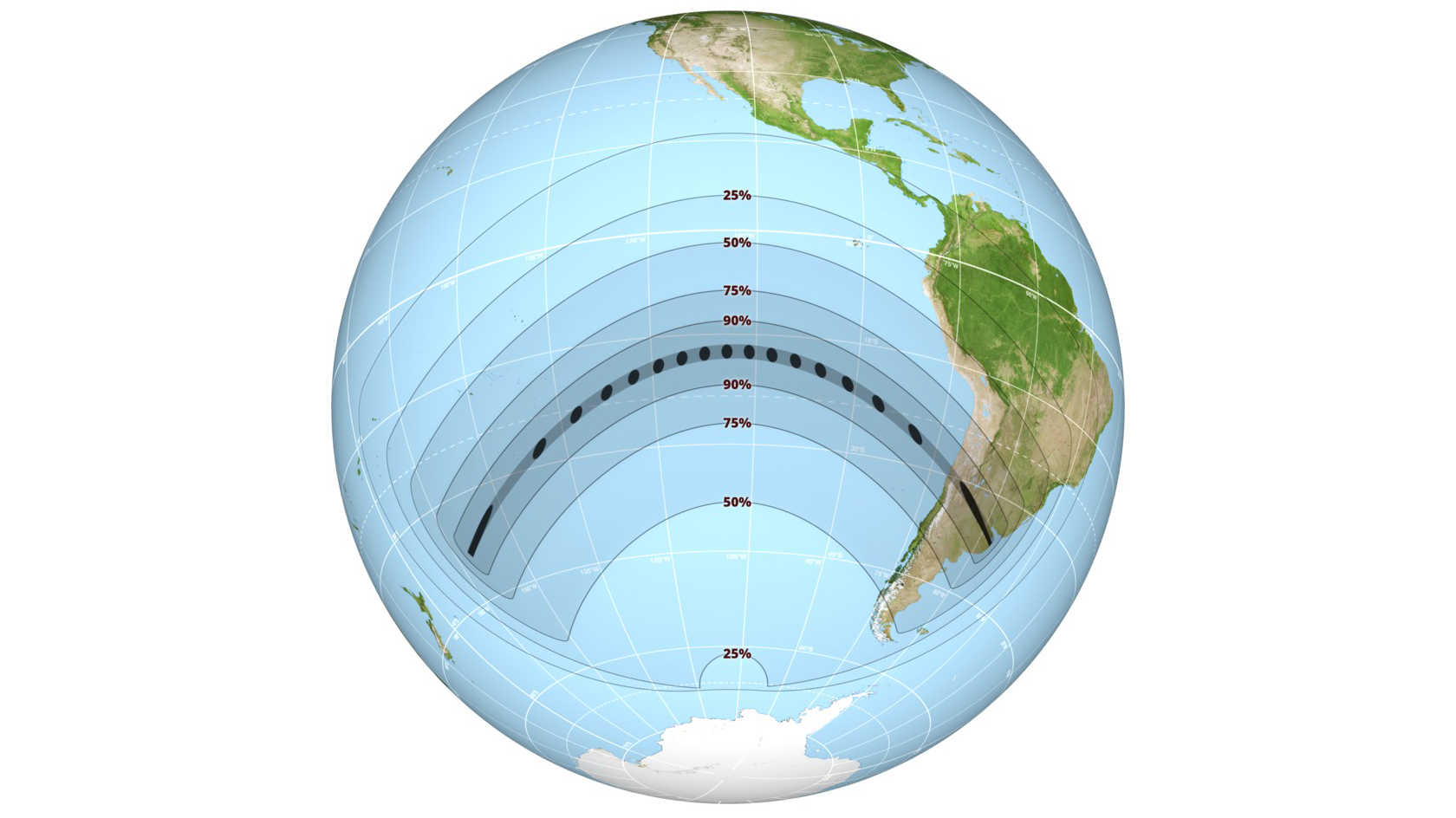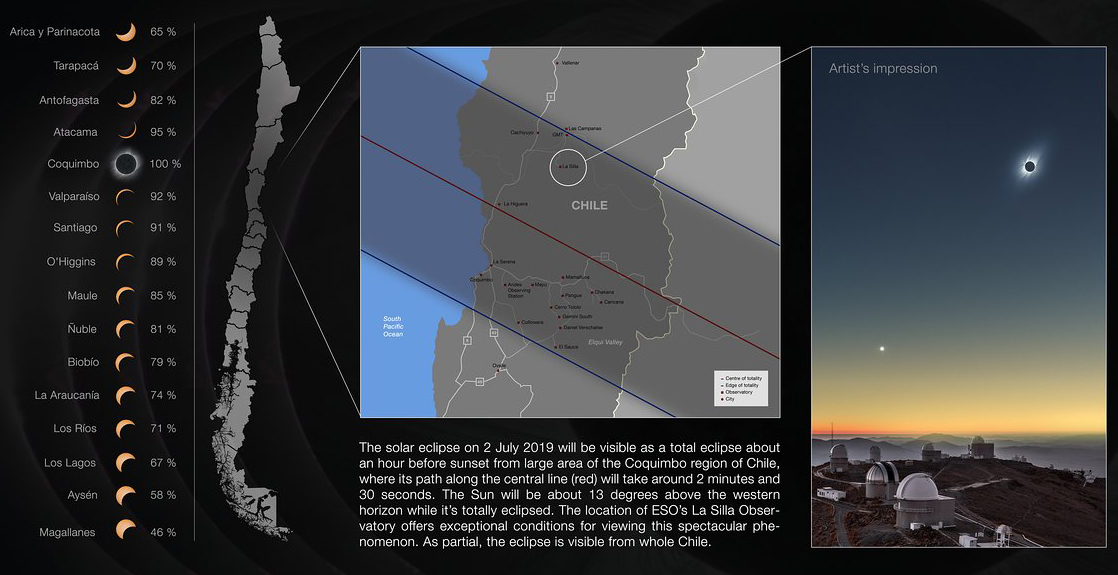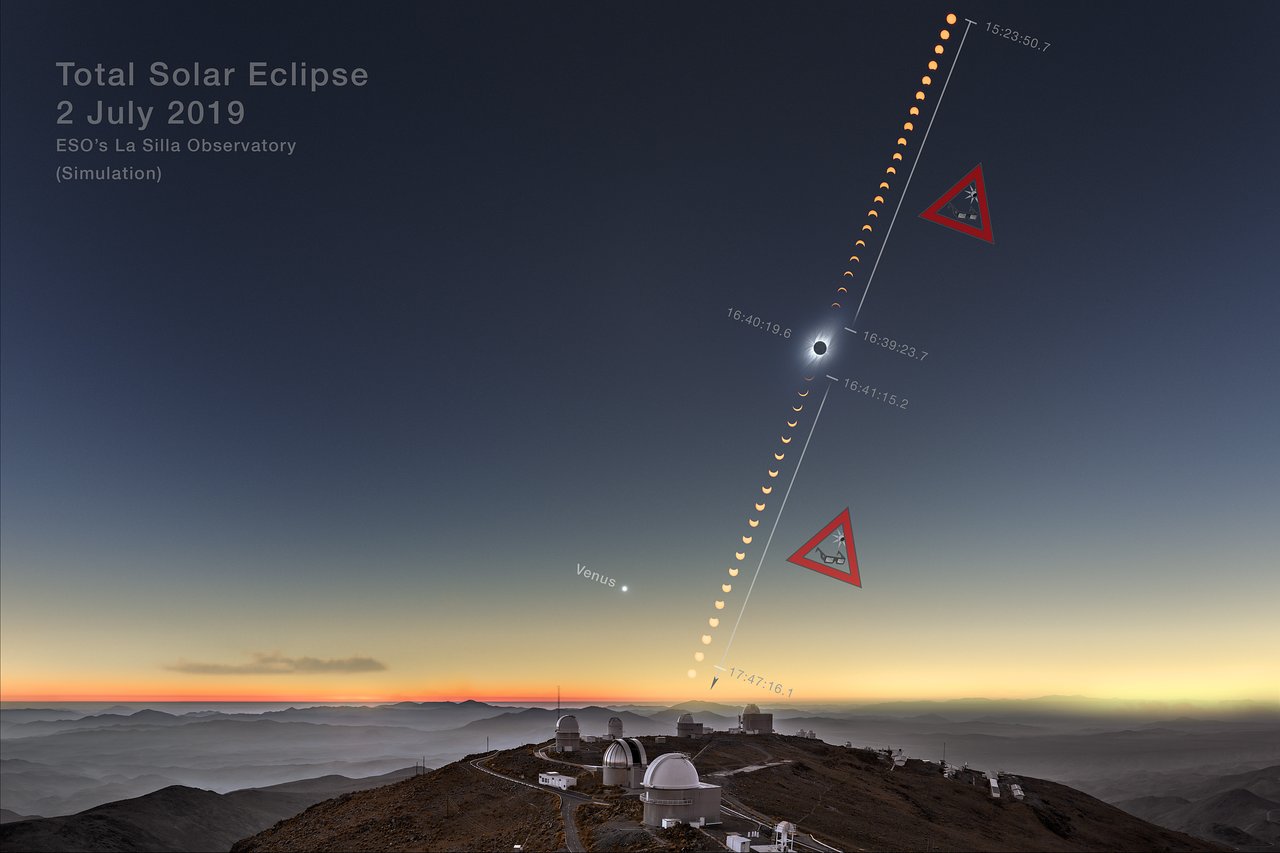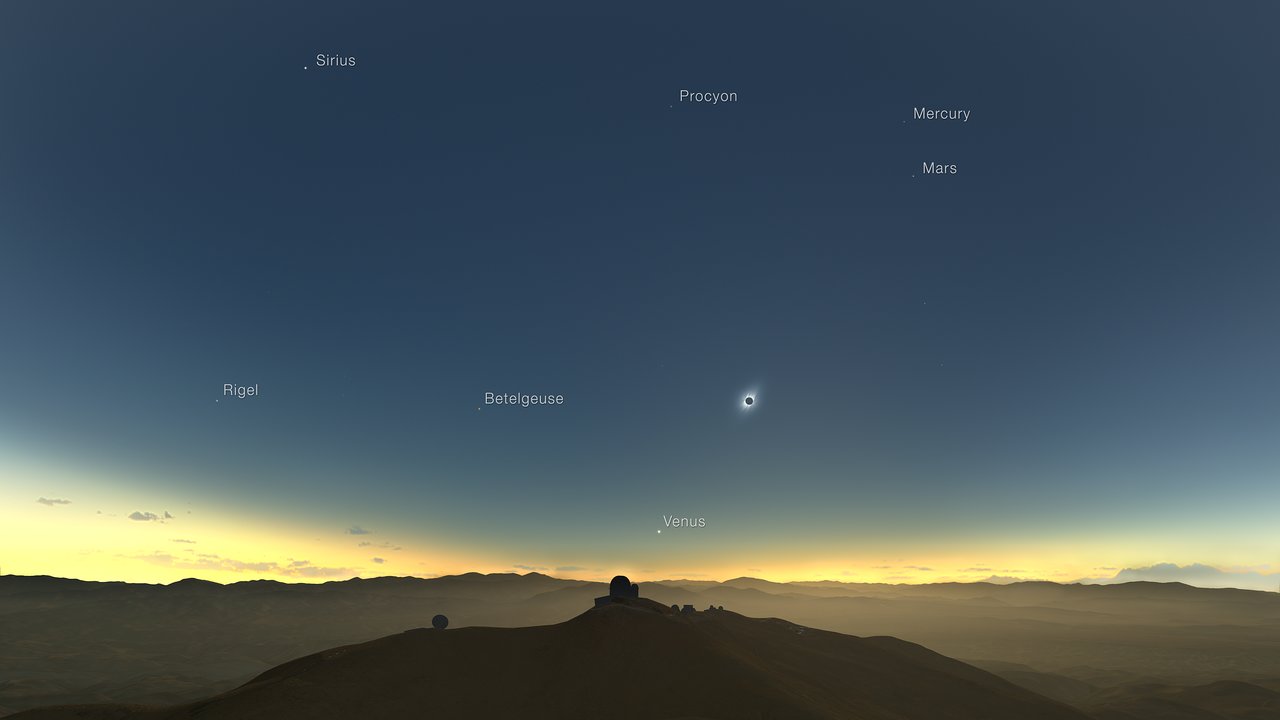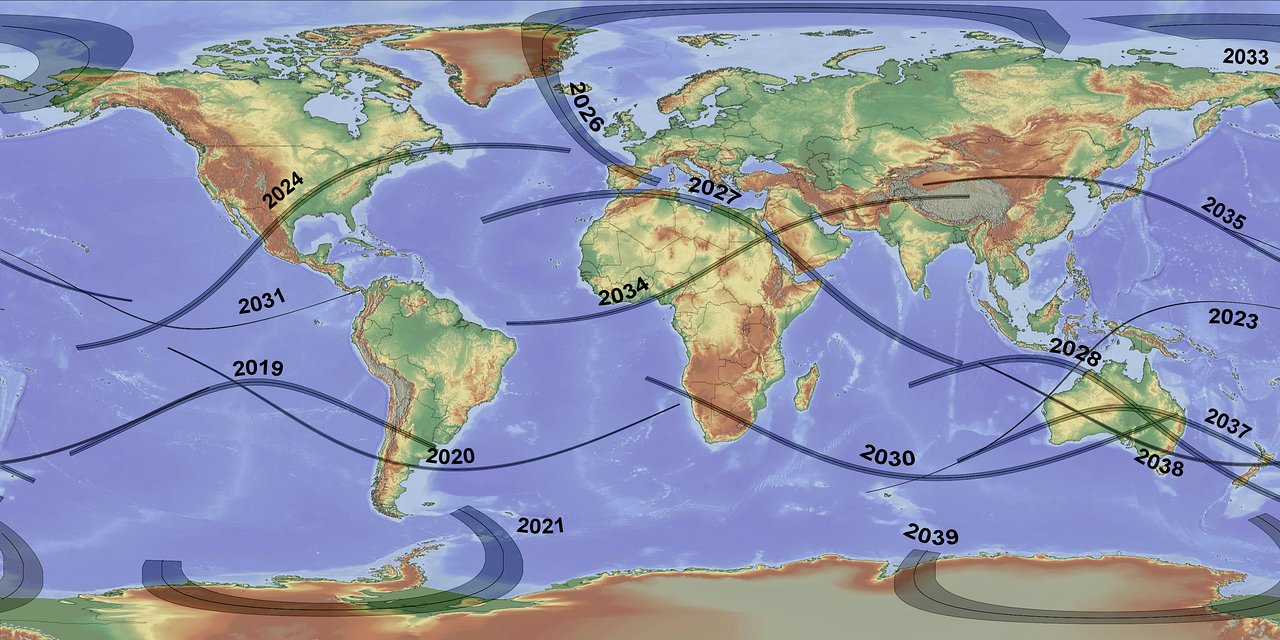Best Photos of the 2019 Total Solar Eclipse
A visual guide to the total solar eclipse of July 2, 2019.
On July 2, a solar eclipse swept across the South Pacific and southern South America.
In parts of Chile and Argentina, skywatchers witnessed a total eclipse of the sun, in which the moon blocked the sun from view — with the exception of its wispy corona. In other parts of South America, skywatchers saw a partial eclipse, with the moon taking a "bite" out of the sun's face.
With this photo guide, you can find out exactly where the eclipse was visible and what it looked like. (Viewing guides are at the top; to see photos of the actual eclipse, scroll down a bit.)
Related: Total Solar Eclipse 2019: A Complete Guide
Visibility Map
This map represents the path that the moon's shadow will take across the Earth's surface during the total solar eclipse. Outside the path of totality, this map shows the percentage of the sun's disk that will be covered by the moon at maximum partial eclipse.
Before the eclipse reaches South America, it will first pass over a few remote islands in the Pacific Ocean. The first place to see the eclipse will be Oeno Island, which will experience 2 minutes and 53 seconds of totality starting at 10:24 a.m. local time (1824 GMT). Totality will narrowly miss Easter Island, where skywatchers will see the moon cover up to about 80% of the sun's disk.
Breaking space news, the latest updates on rocket launches, skywatching events and more!
The moment of greatest eclipse will occur at a point about 1,600 miles (2,600 km) southwest of Isla Isabela of the Galapagos Islands, where totality lasts a whopping 4 minutes and 32.8 seconds. Unfortunately, that's happening over open water, so unless there's an airplane or boat passing though, there won't be any humans around to see it.
Eclipse Animation
An animation of the total solar eclipse on July 2 shows the path the moon's shadow will take across the South Pacific Ocean and South America.
A Global Visualization
In the animated map above, you can see the path of the eclipse as well as the areas of planet Earth where it's daylight at the time. The eclipse will end at sunset on the east coast of Argentina, southeast of Buenos Aires.
Totality in South America
A more detailed map shows the path of totality across Chile and Argentina. Here you can see features including national boundaries, major roads and cities along the path. The shape of the umbra, or the inner part of the moon's shadow, is shown at 3-minute intervals and labeled with the local time zones at its center.
Below is an animated video showing the moon's elongated shadow creeping across South America.
Totality will make its first landfall in South America near La Serena, Chile. The partial eclipse there begins at 3:15 p.m. local time (1915 GMT), and totality begins at 4:38 p.m. local time (2038 GMT). La Serena will experience 2 minutes and 17 seconds of totality.
From there, the eclipse will move southeast across Chile and into Argentina before disappearing into the sunset just south of Montevideo, Uruguay. Most of South America will see at least a partial eclipse, but the path of totality is only about 95 miles (150 kilometers) wide.
To find out the exact circumstances of the eclipse's visibility from a specific location, check out this interactive map by timeanddate.com.
Path of Totality in Chile
This chart shows how the eclipse will appear from different locations in Chile. To the right is an artist's impression of totality over the European Southern Observatory's La Silla Observatory, which is located north of La Serena in Chile's Atacama Desert.
Stages of the Eclipse
This timeline shows how and when the phases of the total solar eclipse will progress as seen from the La Silla Observatory.
Eclipse Progression Over La Silla
This ESO infographic shows the predicted path of the eclipsed sun in the sky above La Silla. The partial phase of the eclipse will end just before sunset there. Farther east, the sun will set before the eclipse is over.
Visible Planets and Stars
During totality, the sky will darken enough to reveal planets and stars that are not otherwise visible from the Southern Hemisphere this time of year, because they're above the horizon during the daytime.
Of course, you'll want to spend your totality looking at the eclipsed sun. But if a cloud happens to block your view of the corona, these are still a good reason to keep looking up!
Be sure to check our eclipse skywatching guide for more details about the visible stars and planets.
How to Observe the Sun Safely
You should never look directly at the sun, but there are ways to safely observe an eclipse. See how to safely observe a solar eclipse with this Space.com infographic.
Read more eclipse-observing tips here:
A Solar Eclipse Can Blind You (Read This Before Looking at the Sun!)
Solar Eclipse Glasses: Where to Buy the Best, High-Quality Eyewear
Things I Used to Observe an Eclipse, Rated
Photos from July 2nd, 2019
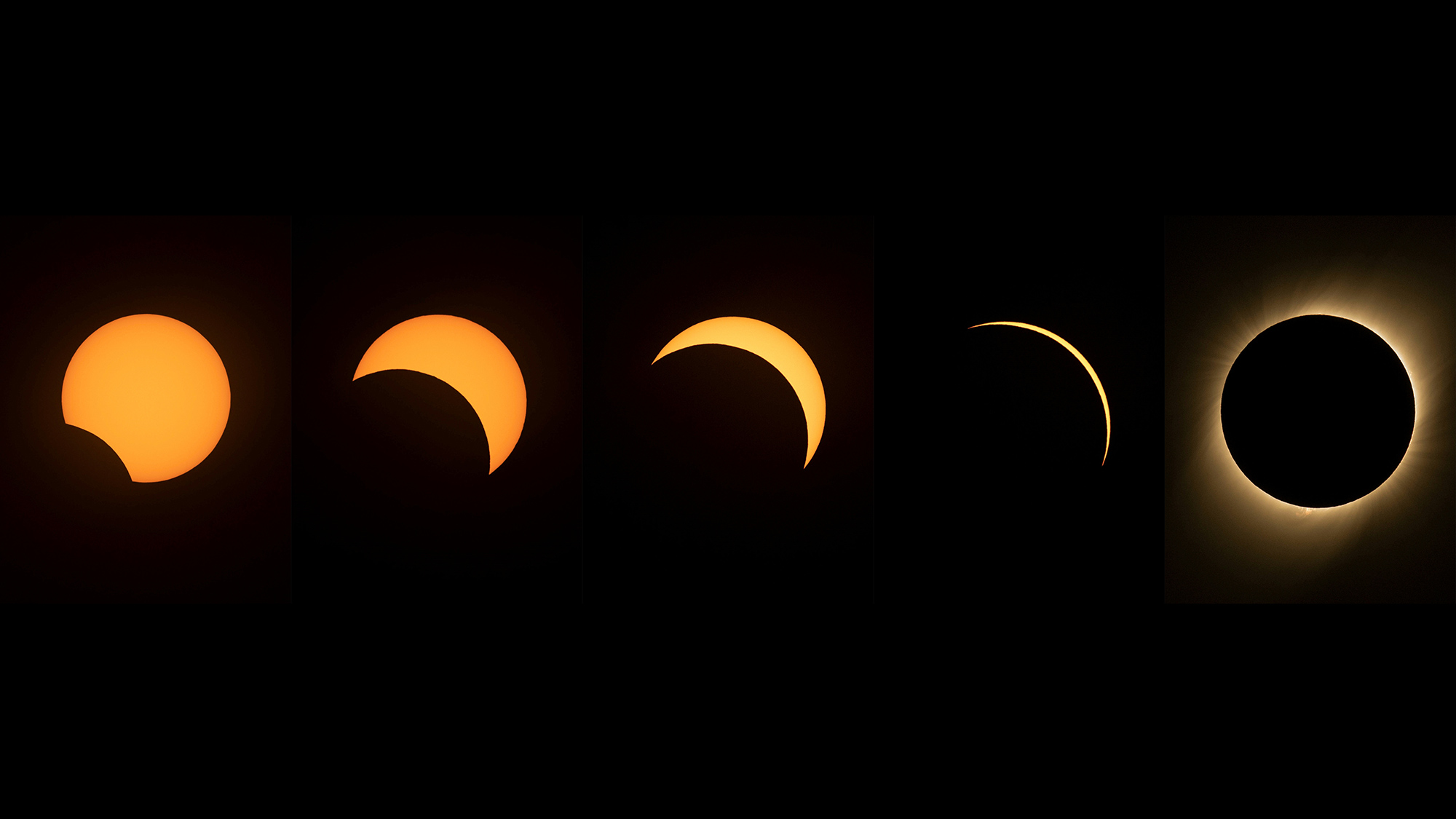
This combination of pictures created on July 2, 2019 shows different stages of the solar eclipse as seen from the La Silla European Southern Observatory (ESO) in La Higuera, Coquimbo Region, Chile.
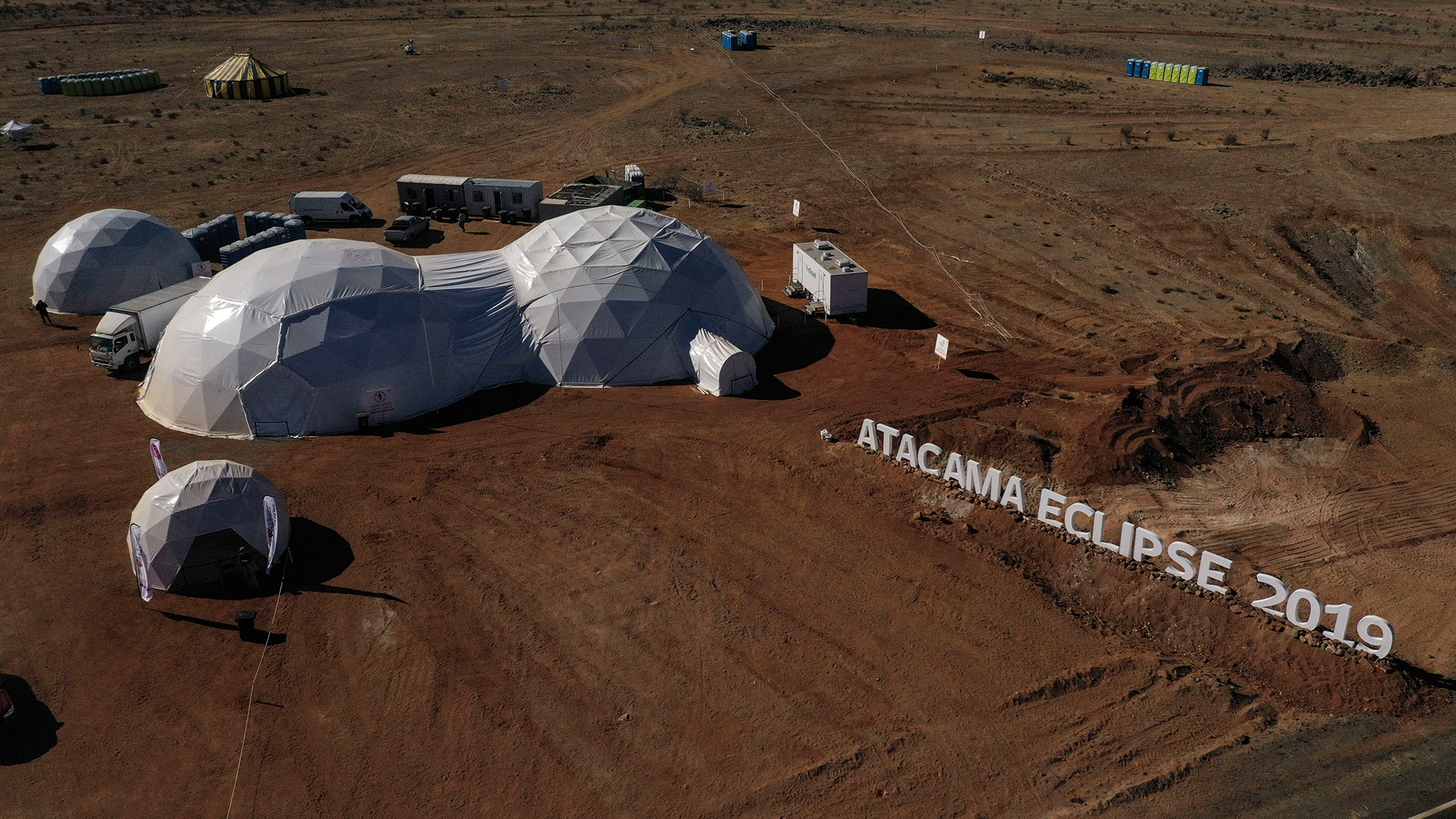
Aerial view of the entrance of an astronomical camp which expects to receive thousands of tourists to observe the July 2 total solar eclipse, in the commune of Vallenar in the Atacama desert about 600 km north of Santiago, on July 1, 2019.

An astronomer prepares his telescope ahead of a solar eclipse at the La Silla European Southern Observatory (ESO), in La Higuera, Coquimbo Region, Chile.
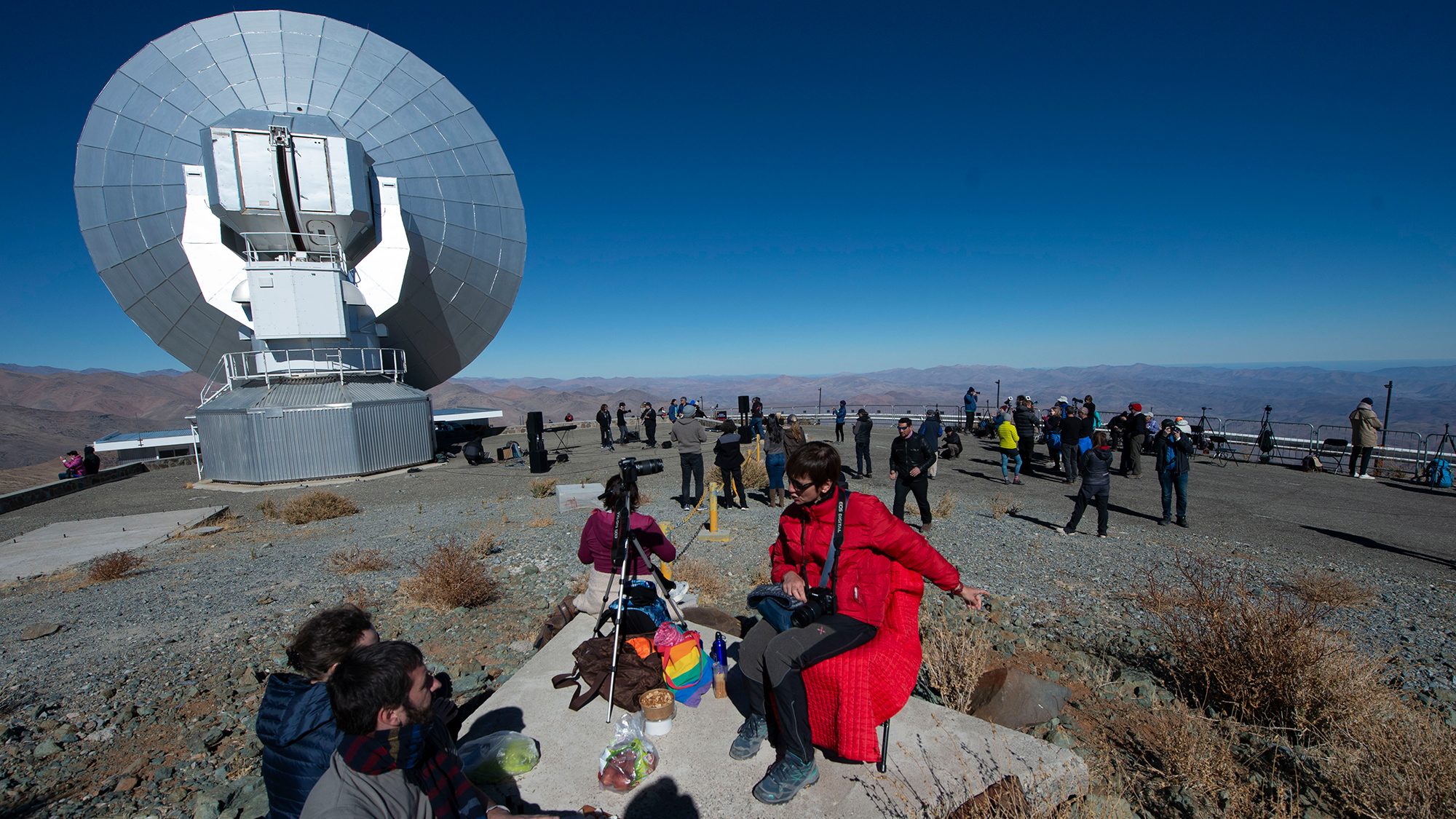
Tourists wait for a solar eclipse at La Silla European Southern Observatory (ESO), in La Higuera, Coquimbo Region, Chile.
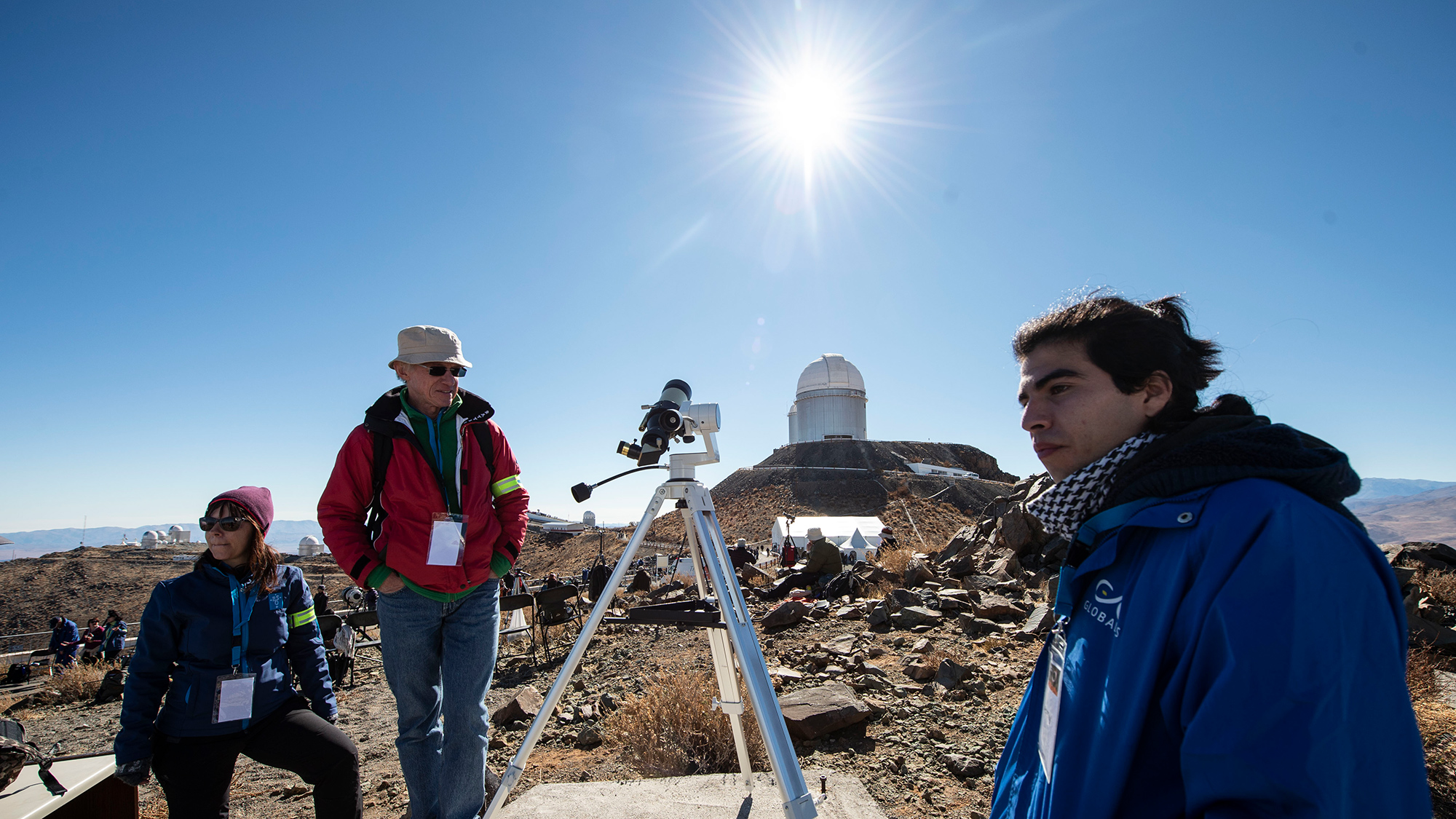
An astronomer prepares his telescope at La Silla European Southern Observatory (ESO), ahead of a solar eclipse in La Higuera, Coquimbo Region, Chile.
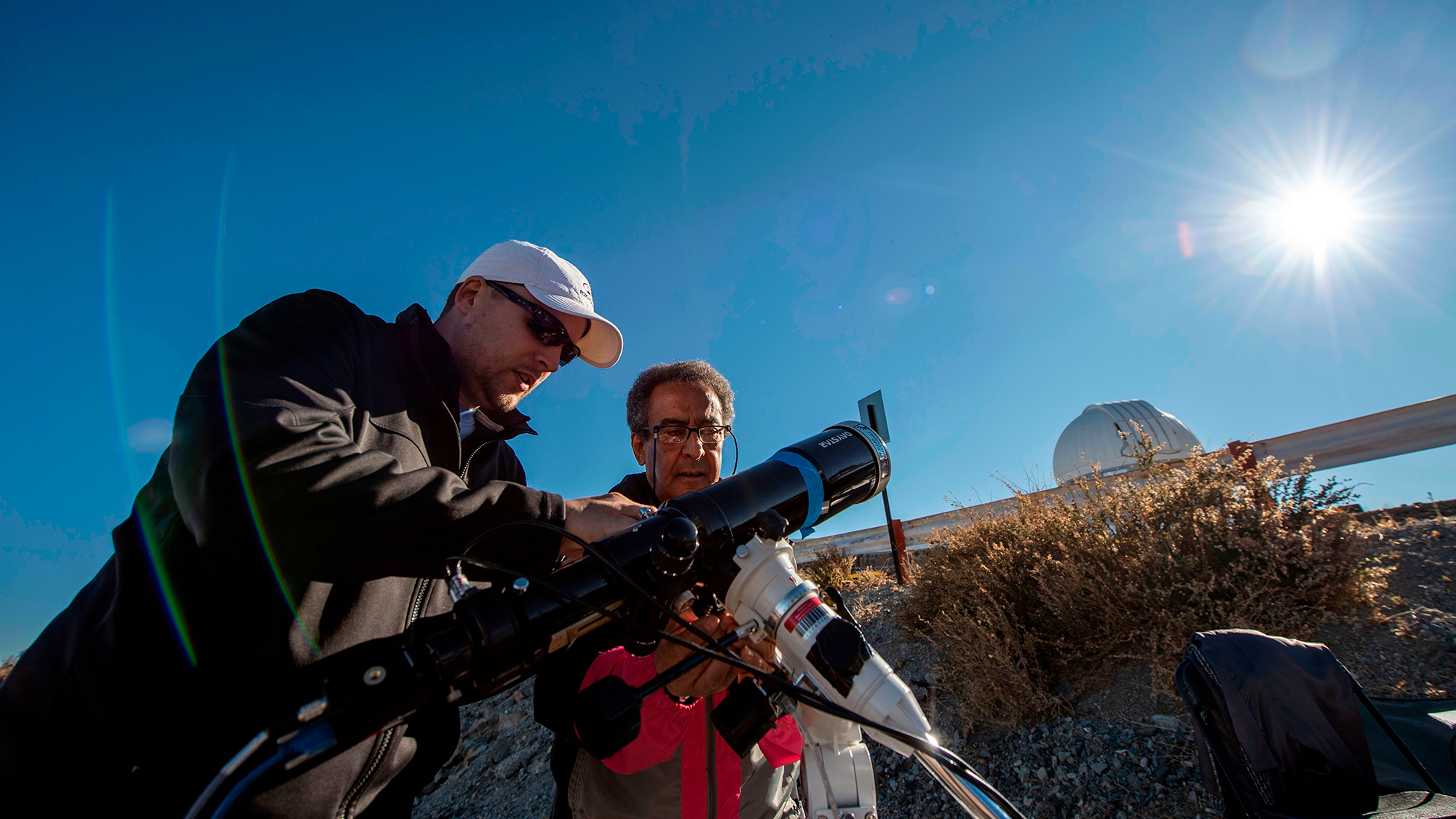
An astronomer prepares his telescope ahead of a solar eclipse at the La Silla European Southern Observatory (ESO), in La Higuera, Coquimbo Region, Chile.
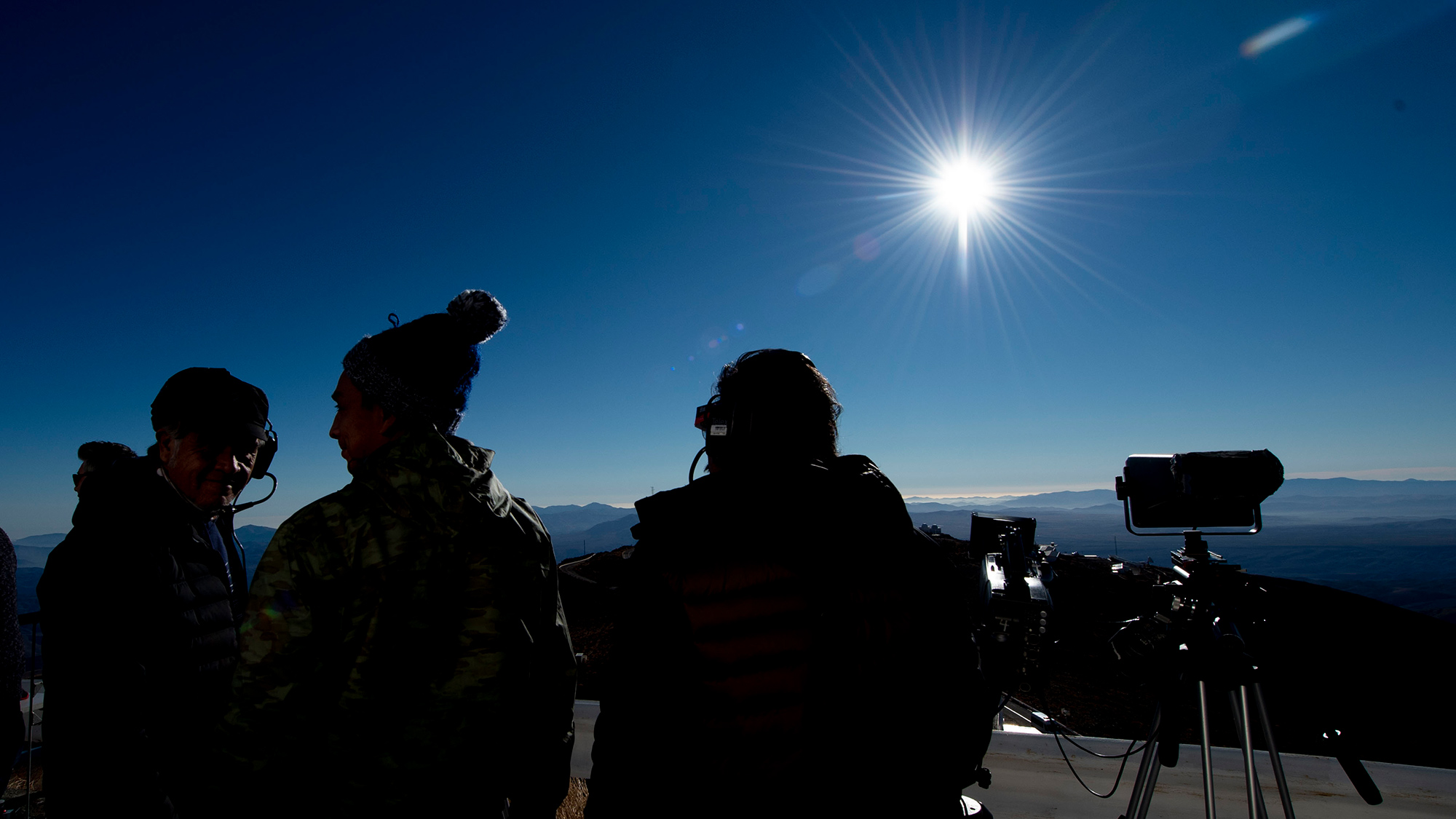
People watch a solar eclipse at the European Southern Observatory's (ESO) La Silla Observatory in La Higuera, Coquimbo Region, Chile, on July 02, 2019.

People watch a solar eclipse at La Silla Observatory in La Higuera, Coquimbo Region, Chile, on July 02, 2019.

The solar eclipse as seen from La Silla Observatory in La Higuera, Coquimbo Region, Chile, on July 02, 2019.
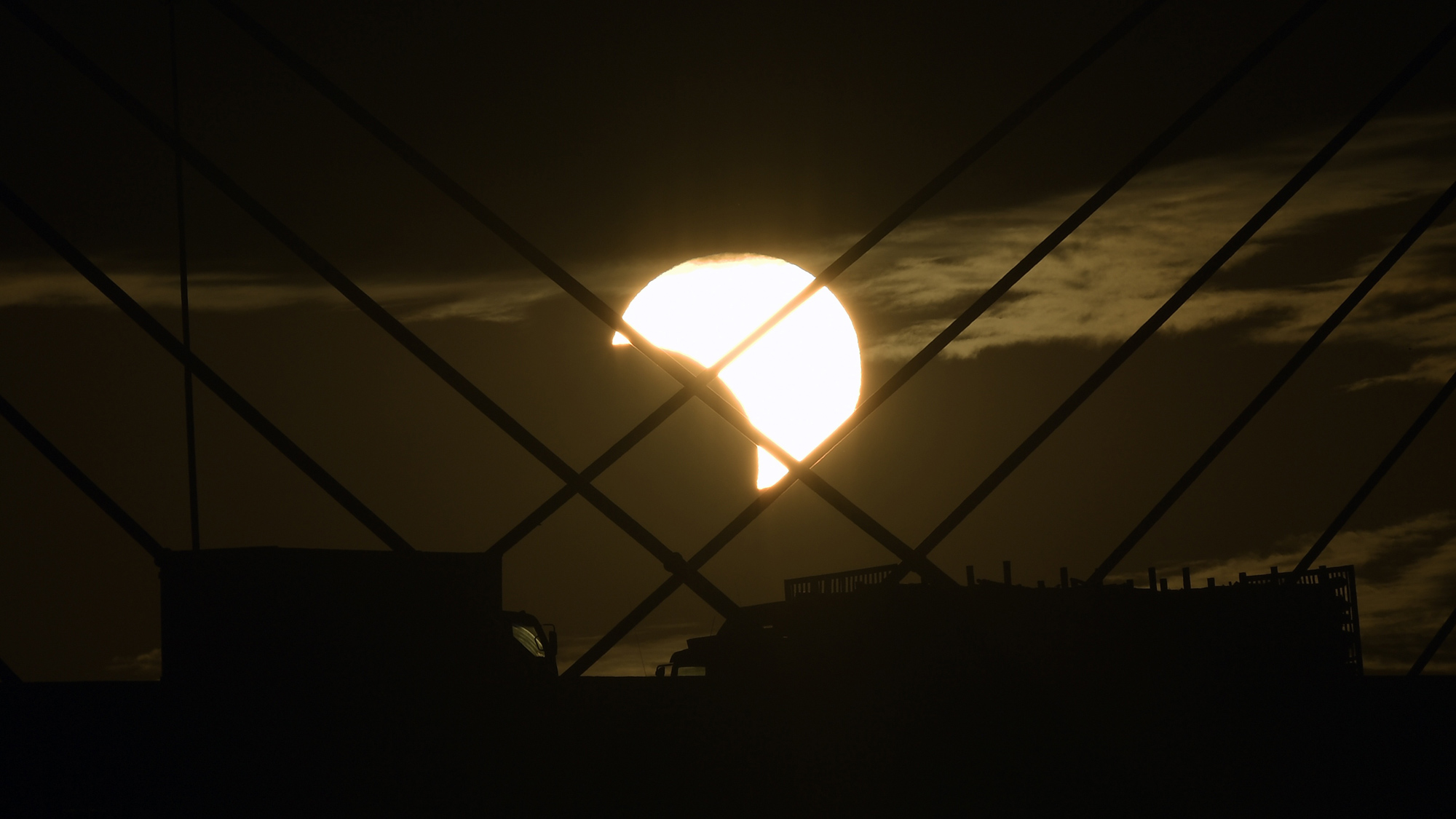
Partial solar eclipse as seen from Porto Alegre, Rio Grande do Sul, Brazil, on July 2, 2019.

Solar eclipse as seen from the La Silla Observatory in La Higuera, Coquimbo Region, Chile.
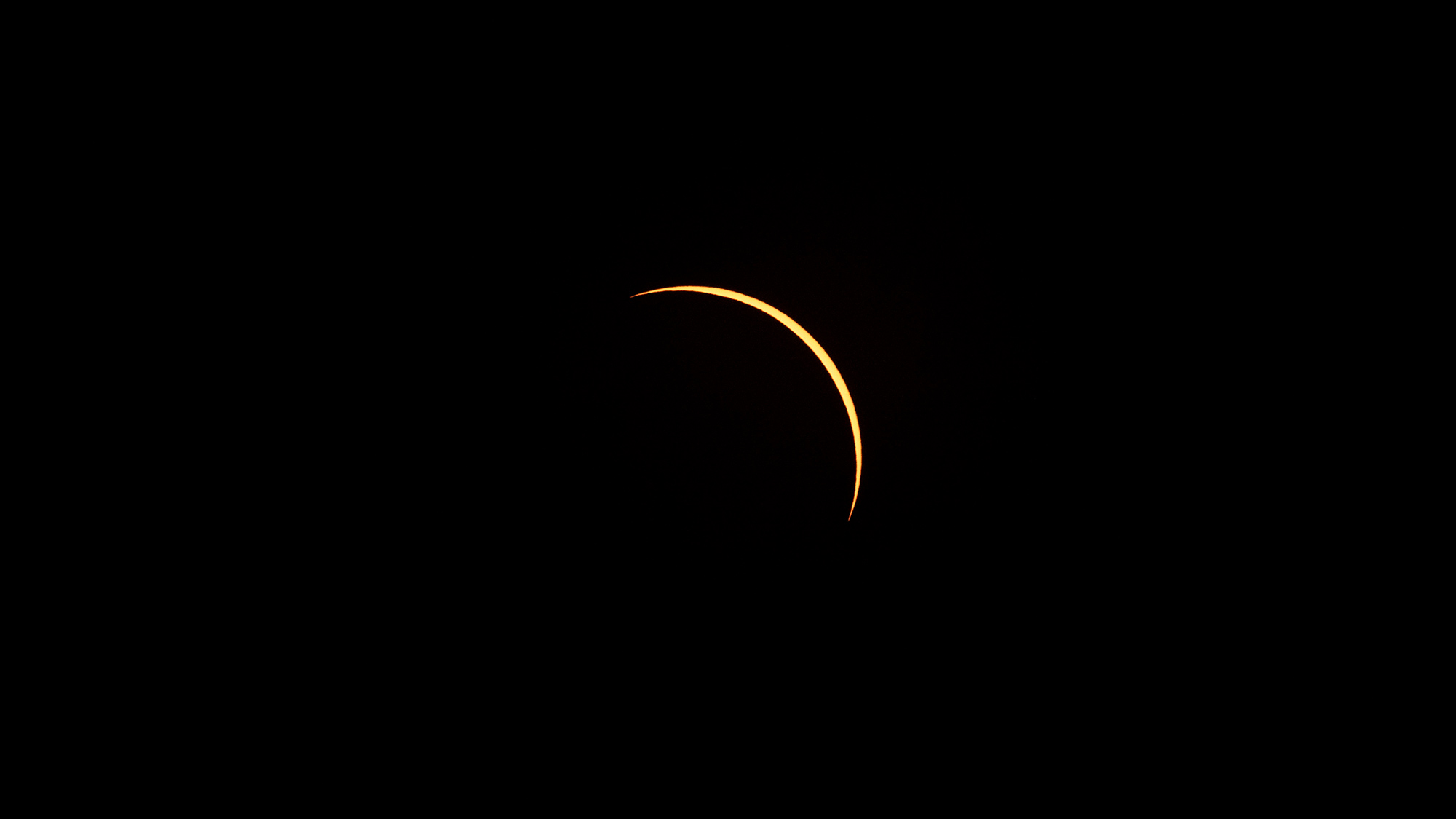
Solar eclipse as seen from La Silla Observatory in La Higuera, Coquimbo Region, Chile.
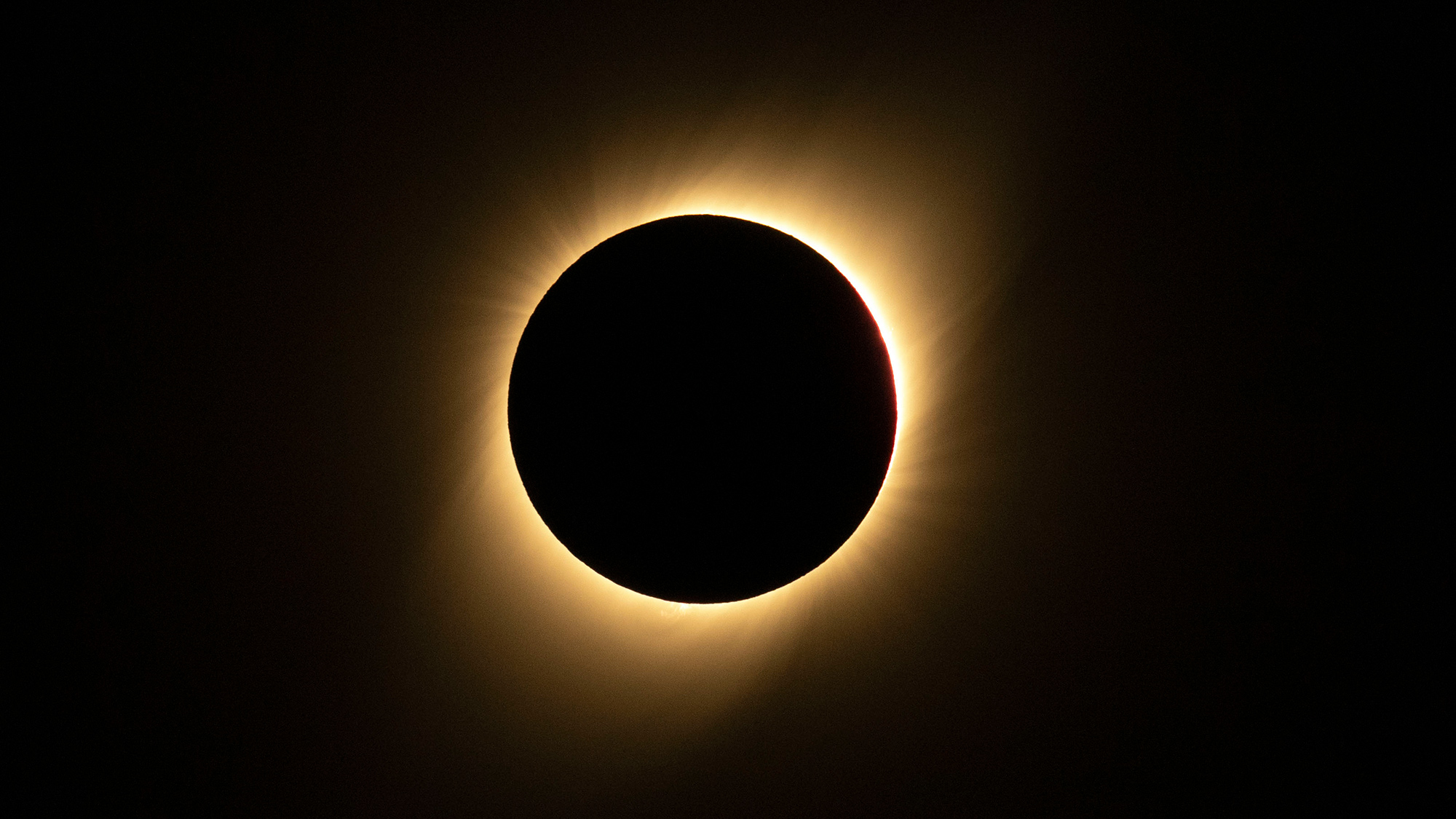
Solar eclipse as seen from La Silla Observatory in La Higuera, Coquimbo Region, Chile, on July 02, 2019.
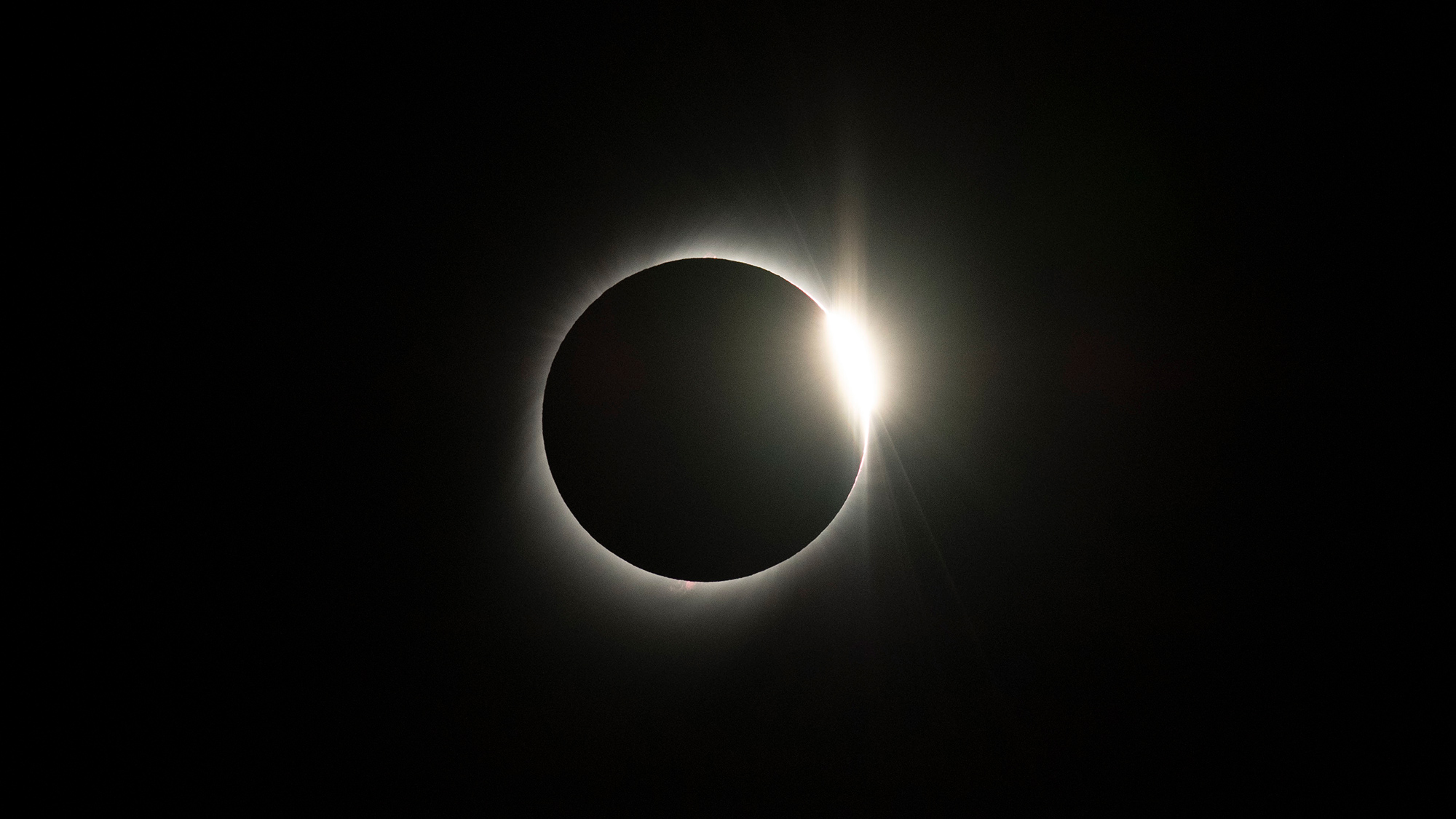
Solar eclipse as seen from La Silla Observatory in La Higuera, Coquimbo Region, Chile, on July 02, 2019.
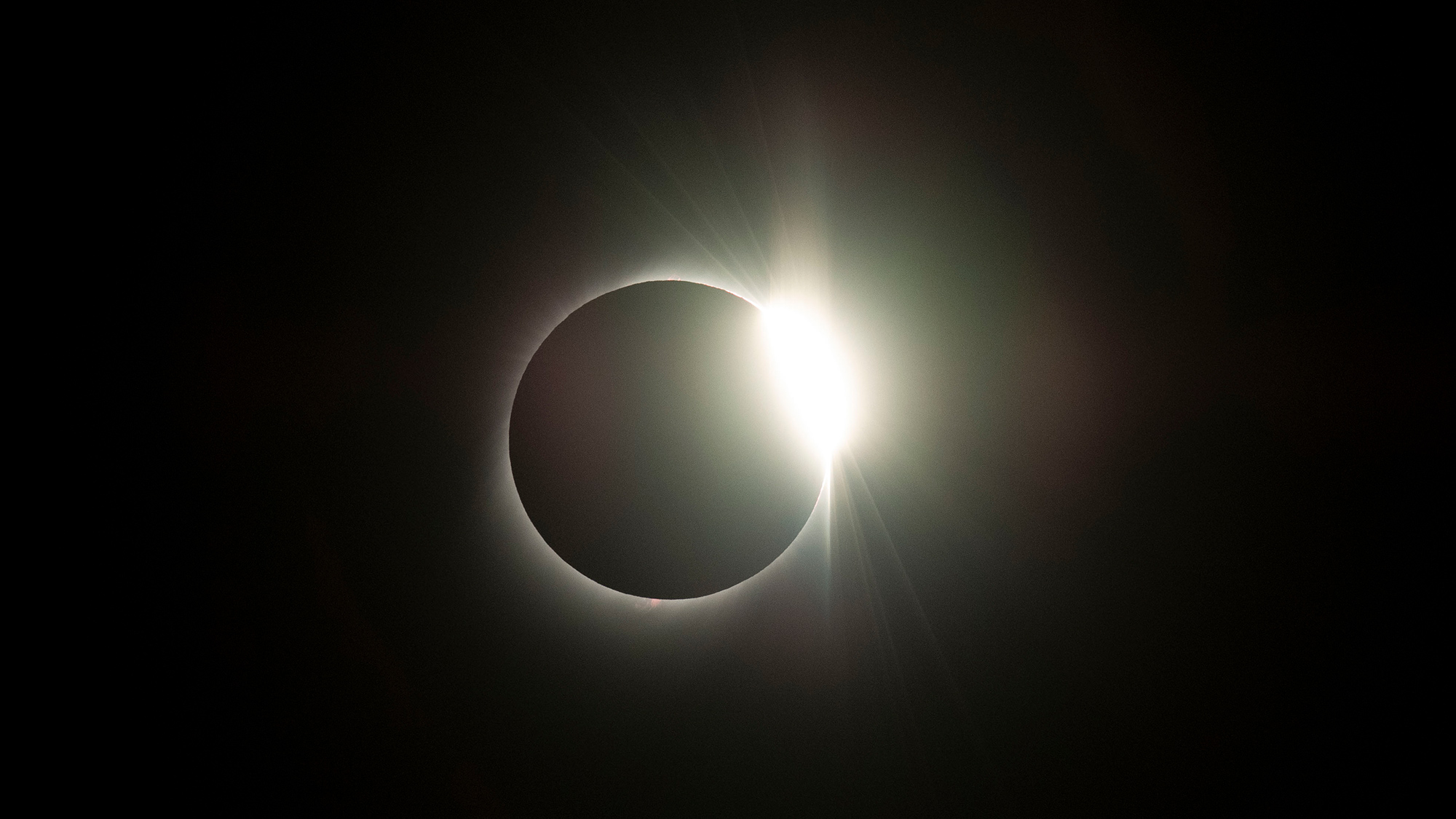
Solar eclipse as seen from La Silla Observatory in La Higuera, Coquimbo Region, Chile, on July 02, 2019.
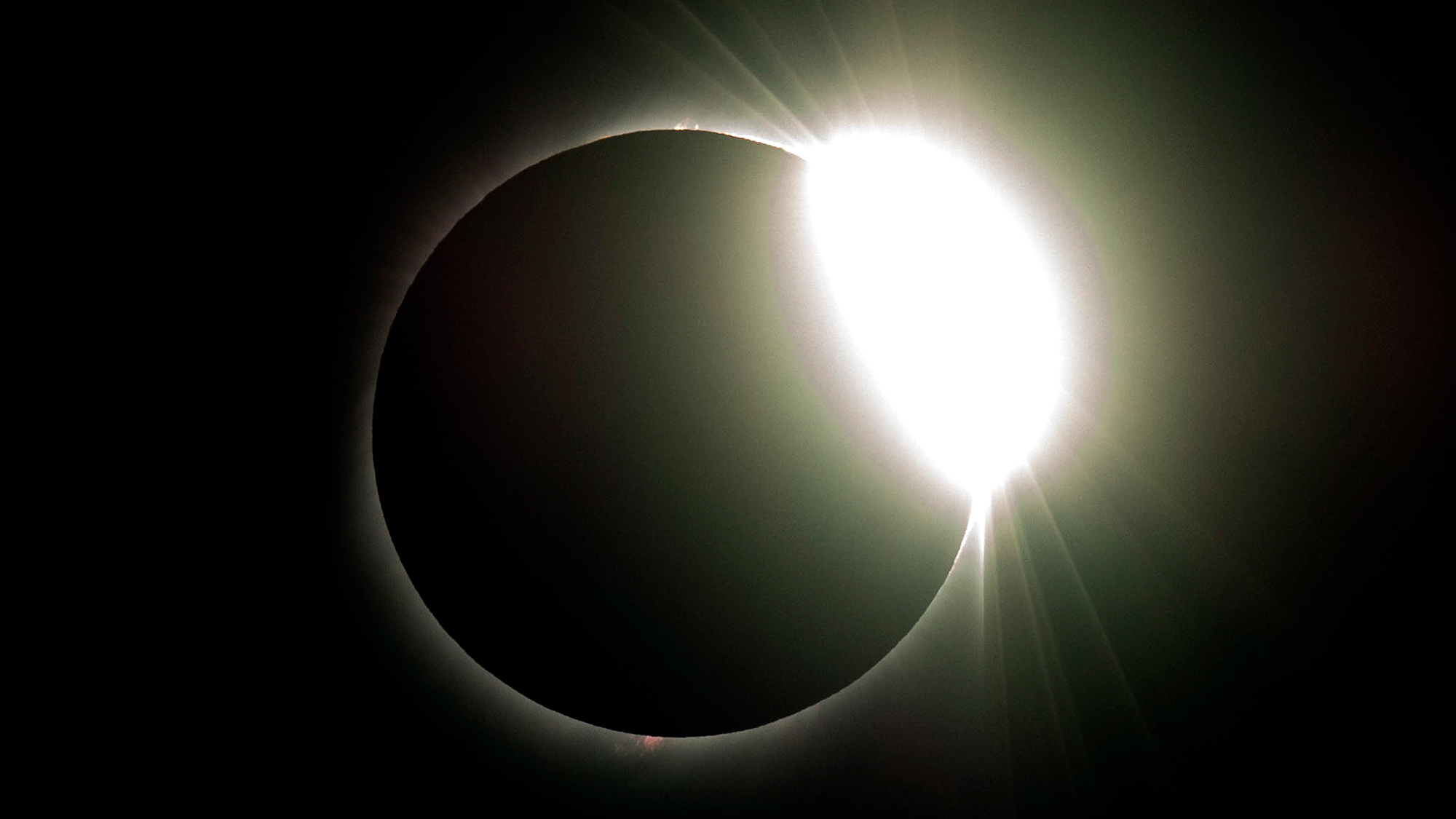
Solar eclipse as seen from La Silla Observatory in La Higuera, Coquimbo Region, Chile, on July 02, 2019.
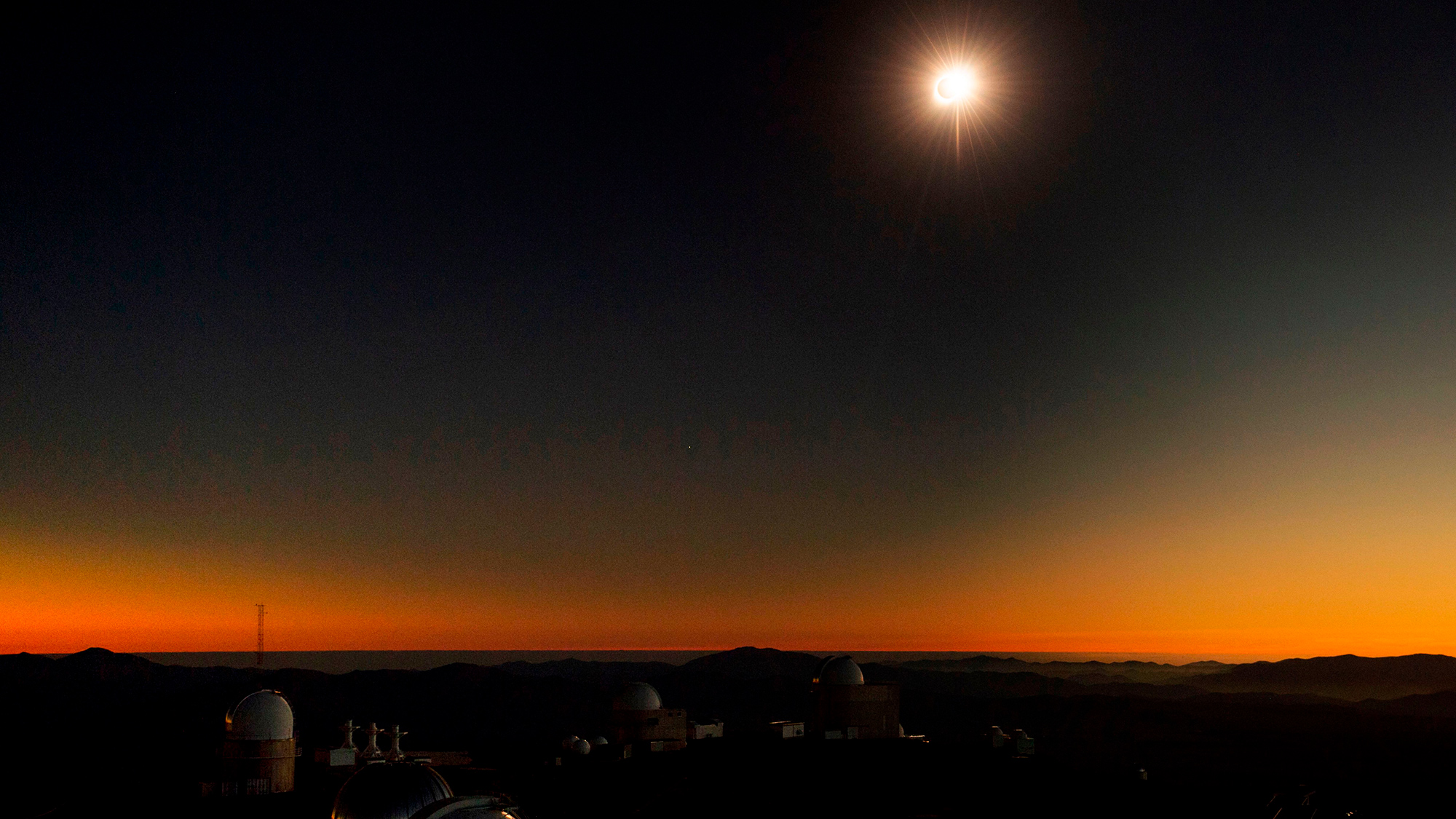
Solar eclipse as seen from La Silla Observatory in La Higuera, Coquimbo Region, Chile, on July 02, 2019.

Solar eclipse as seen from La Silla Observatory in La Higuera, Coquimbo Region, Chile, on July 02, 2019.
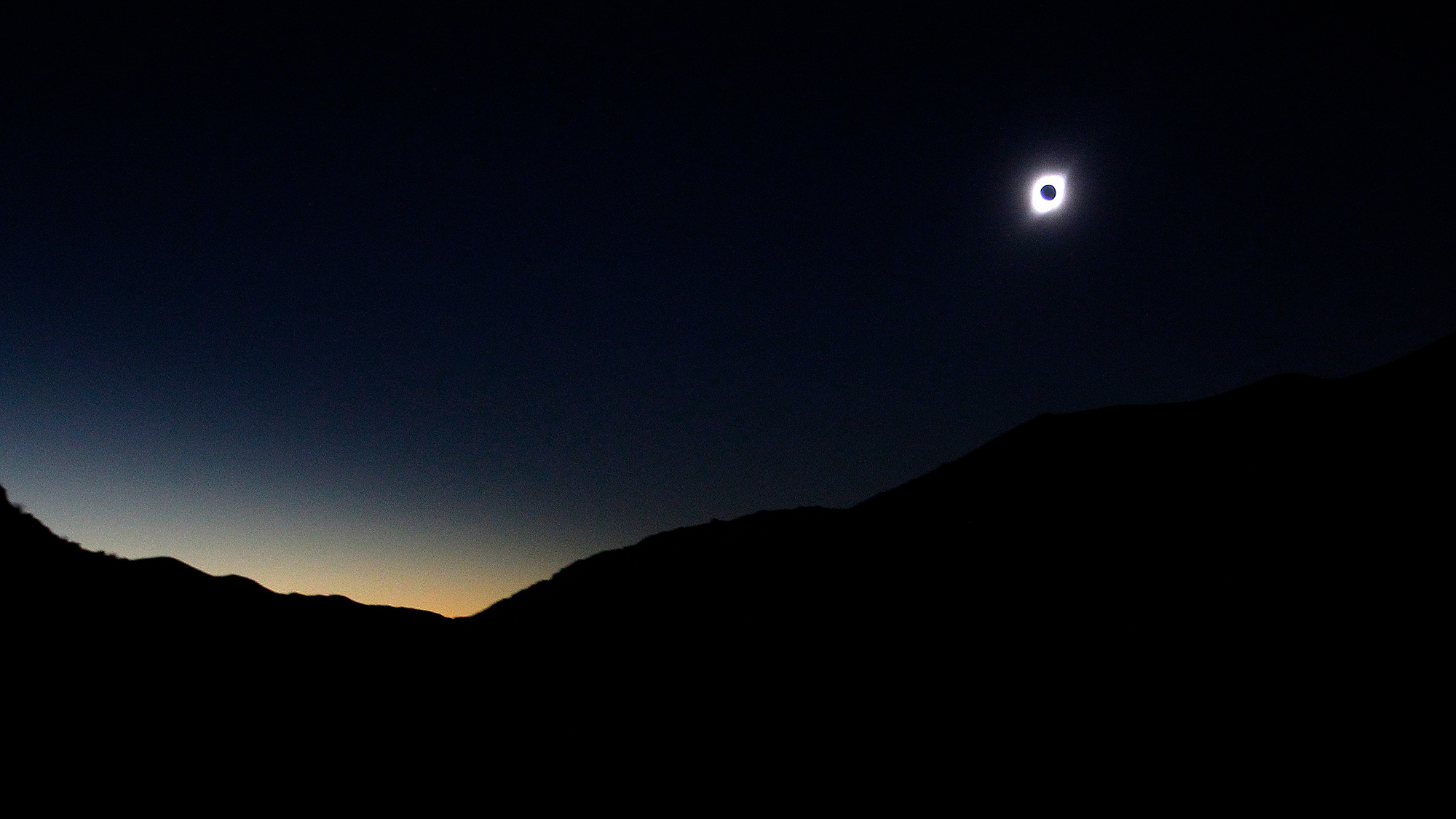
Total solar eclipse on July 2, 2019 in Paiguano, Chile.
Eclipses to Come
If you missed this year's total solar eclipse, it's not too late to start planning for the next one! Here's a map of all the total solar eclipses coming up until the year 2040.
The next solar eclipse will be an annular eclipse on Dec. 26, 2019. While the moon will be directly in front of the sun, it will be too far away from Earth to completely cover the sun's disk. Hence, this type of eclipse is known as a "ring of fire" eclipse. That eclipse will be visible from parts of Saudi Arabia, India and Indonesia. Meanwhile, skywatchers in Europe, Asia and part of Australia will see a partial eclipse. Another annular eclipse will cross over Africa, the Middle East and southern Asia on June 21, 2020.
The next total solar eclipse will occur on Dec. 14, 2020, and it will take a very similar route across South America before ending just off the west coast of Namibia in southern Africa.
Skywatchers in the U.S. will have to wait until Oct. 14, 2023 for the next solar eclipse, which will be of the annular variety. The next total solar eclipse in the U.S. will occur on April 8, 2024.
You can find a comprehensive list of upcoming solar eclipses here, complete with interactive maps, courtesy of timeanddate.com.
- Solar Eclipses: When Is the Next One?
- Solar Eclipses: An Observer's Guide (Infographic)
- Total Solar Eclipses: How Often Do They Occur (and Why)?
Editor's Note: If you snap an amazing picture of the July 2, 2019 total solar eclipse and would like to share it with Space.com's readers, send your photos, comments, and your name and location to spacephotos@space.com.
Email Hanneke Weitering at hweitering@space.com or follow her @hannekescience. Follow us on Twitter @Spacedotcom and on Facebook.

Hanneke Weitering is a multimedia journalist in the Pacific Northwest reporting on the future of aviation at FutureFlight.aero and Aviation International News and was previously the Editor for Spaceflight and Astronomy news here at Space.com. As an editor with over 10 years of experience in science journalism she has previously written for Scholastic Classroom Magazines, MedPage Today and The Joint Institute for Computational Sciences at Oak Ridge National Laboratory. After studying physics at the University of Tennessee in her hometown of Knoxville, she earned her graduate degree in Science, Health and Environmental Reporting (SHERP) from New York University. Hanneke joined the Space.com team in 2016 as a staff writer and producer, covering topics including spaceflight and astronomy. She currently lives in Seattle, home of the Space Needle, with her cat and two snakes. In her spare time, Hanneke enjoys exploring the Rocky Mountains, basking in nature and looking for dark skies to gaze at the cosmos.
